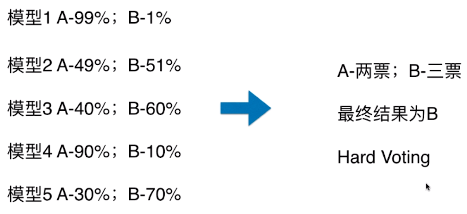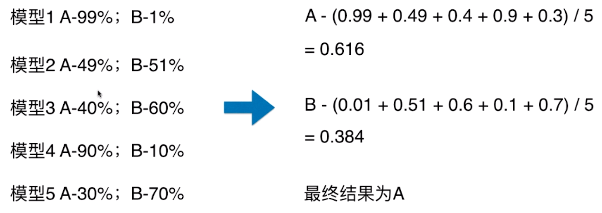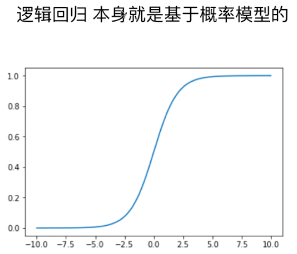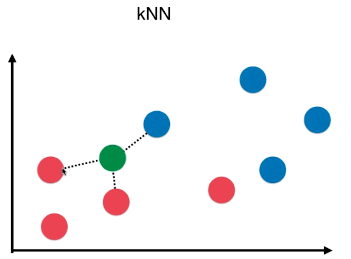sklearn集成学习之VotingClassifier
在机器学习中,我们可以对KNN、逻辑回归、SVM、决策树、神经网络等预测的结果进行投票,少数服从多数最终决定预测结果。在sklearn中提供了一个Voting Classifier的方法进行投票。这是属于集成学习的一种。Voting Classifier分为Hard和Soft两种方式。
sklearn集成学习之VotingClassifier
在机器学习中,我们可以对KNN、逻辑回归、SVM、决策树、神经网络等预测的结果进行投票,少数服从多数最终决定预测结果。
在sklearn中提供了一个Voting Classifier的方法进行投票。这是属于集成学习的一种。Voting Classifier分为Hard和Soft两种方式。
VotingClassifier的参数
Parameters:
estimators : list of (string, estimator) tuples
Invoking the
fitmethod on theVotingClassifierwill fit clones of those original estimators that will be stored in the class attribute self.estimators_.
voting : str, {‘hard’, ‘soft’} (default=’hard’)
If ‘hard’, uses predicted class labels for majority rule voting. Else if ‘soft’, predicts the class label based on the argmax( 自动回归滑动平均模型) of the sums of the predicted probabilities, which is recommended for an ensemble of well-calibrated(标准的) classifiers.
weights : array-like, shape = [n_classifiers], optional (default=None)
Sequence of weights (float or int) to weight the occurrences of predicted class labels (hard voting) or class probabilities before averaging (soft voting). Uses uniform weights if None.
#每个方法预先的权值,默认各方法权值相同.
这里面的estimators和weights都是比较容易看懂的,但是voting有两个选择,一个是’hard’,另一个是’soft’,现在就讲一下这两者的区别
一、Hard Voting 与 Soft Voting 的对比
1)使用方式
- voting = ‘hard’:表示最终决策方式为 Hard Voting Classifier;
- voting = ‘soft’:表示最终决策方式为 Soft Voting Classifier;
2)思想
-
Hard Voting Classifier:根据少数服从多数来定最终结果;
-
Soft Voting Classifier:将所有模型预测样本为某一类别的概率的平均值作为标准,概率最高的对应的类型为最终的预测结果;
-
Hard Voting
-
模型 1:A - 99%、B - 1%,表示模型 1 认为该样本是 A 类型的概率为 99%,为 B 类型的概率为 1%;
-

-
Soft Voting
-
将所有模型预测样本为某一类别的概率的平均值作为标准;
-

-
Hard Voting 投票方式的弊端:
- 如上图,最终的分类结果不是由概率值更大的模型 1 和模型 4 决定,而是由概率值相对较低的模型 2/3/5 来决定的;
二、各分类算法的概率计算
- Soft Voting 的决策方式,要求集合的每一个模型都能估计概率;
1)逻辑回归算法
- P = σ( y_predict )

2)kNN 算法
-
k 个样本点中,数量最多的样本所对应的类别作为最终的预测结果;
-
kNN 算法也可以考虑权值,根据选中的 k 个点距离待预测点的距离不同,k 个点的权值也不同;
-
P = n / k
-
n:k 个样本中,最终确定的类型的个数;如下图,最终判断为 红色类型,概率:p = n/k = 2 / 3;
-

3)决策树算法
-
通常在“叶子”节点处的信息熵或者基尼系数不为 0,数据集中包含多种类别的数据,以数量最多的样本对应的类别作为最终的预测结果;(和 kNN 算法类似)
-
P = n / N
- n:“叶子”中数量最多的样本的类型对应的样本数量;
- N:“叶子”中样本总量;
4)SVM 算法
- 在 scikit-learn 中的 SVC() 中的一个参数:probability
-
probability = True:SVC() 返回样本为各个类别的概率;(默认为 False)
from sklearn.svm import SVC svc = SVC(probability=True) -
计算样本为各个类别的概率需要花费较多时间;
三、scikit-learn 中使用集成分类器:VotingClassifier
1)模拟数据集
import numpy as np
import matplotlib.pyplot as plt
from sklearn import datasets
from sklearn.model_selection import train_test_split
X, y = datasets.make_moons(n_samples=500, noise=0.3, random_state=42)
X_train, X_test, y_train, y_test = train_test_split(X, y, random_state=42)
2)voting = ‘hard’:使用 Hard Voting 做决策
from sklearn.linear_model import LogisticRegression
from sklearn.svm import SVC
from sklearn.tree import DecisionTreeClassifier
from sklearn.ensemble import VotingClassifier
# 实例化
voting_clf = VotingClassifier(estimators=[
('log_clf', LogisticRegression()),
('svm_clf', SVC()),
('dt_clf', DecisionTreeClassifier(random_state=666))
], voting='hard')
voting_clf.fit(X_train, y_train)
voting_clf.score(X_test, y_test)
# 准确率:0.896
3)voting = ‘soft’:使用 Soft Voting 做决策
voting_clf = VotingClassifier(estimators=[
('log_clf', LogisticRegression()),
('svm_clf', SVC(probability=True)),
('dt_clf', DecisionTreeClassifier(random_state=666))
], voting='soft')
voting_clf.fit(X_train, y_train)
voting_clf.score(X_test, y_test)
# 准确率:0.912
- 使用 Soft Voting 时,SVC() 算法的参数:probability=True
更多推荐
 已为社区贡献6条内容
已为社区贡献6条内容









所有评论(0)